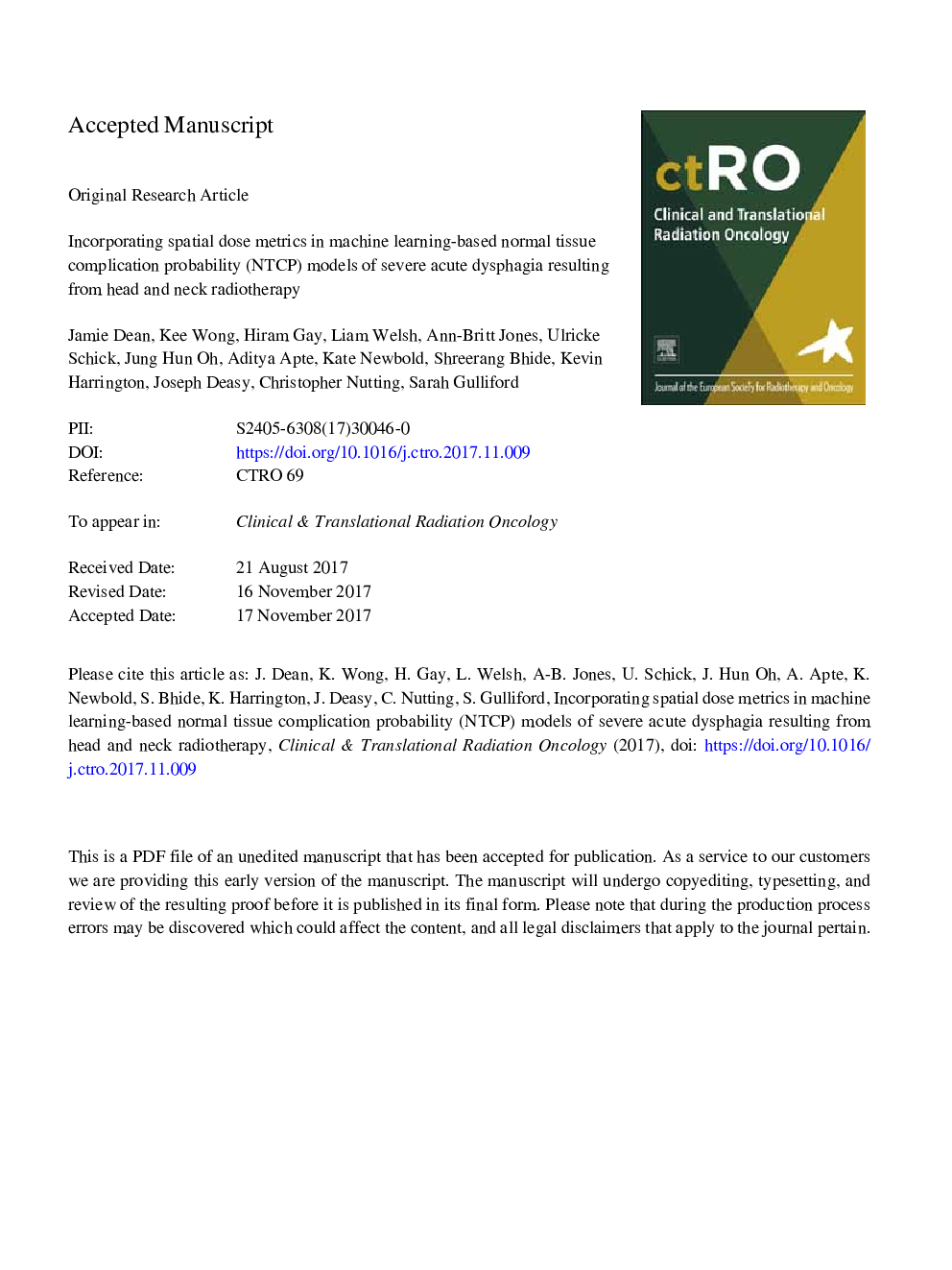| Article ID | Journal | Published Year | Pages | File Type |
|---|---|---|---|---|
| 8922448 | Clinical and Translational Radiation Oncology | 2018 | 40 Pages |
Abstract
Severe acute dysphagia commonly results from head and neck radiotherapy (RT). A model enabling prediction of severity of acute dysphagia for individual patients could guide clinical decision-making. Statistical associations between RT dose distributions and dysphagia could inform RT planning protocols aiming to reduce the incidence of severe dysphagia. We aimed to establish such a model and associations incorporating spatial dose metrics. Models of severe acute dysphagia were developed using pharyngeal mucosa (PM) RT dose (dose-volume and spatial dose metrics) and clinical data. Penalized logistic regression (PLR), support vector classification and random forest classification (RFC) models were generated and internally (173 patients) and externally (90 patients) validated. These were compared using area under the receiver operating characteristic curve (AUC) to assess performance. Associations between treatment features and dysphagia were explored using RFC models. The PLR model using dose-volume metrics (PLRstandard) performed as well as the more complex models and had very good discrimination (AUCâ¯=â¯0.82) on external validation. The features with the highest RFC importance values were the volume, length and circumference of PM receiving 1â¯Gy/fraction and higher. The volumes of PM receiving 1â¯Gy/fraction or higher should be minimized to reduce the incidence of severe acute dysphagia.
Keywords
DLHIMRTDVHRFCPLRSVCDCHCTCAENtcpAUCNormal tissue complication probabilityRadiotherapyPenalized logistic regressionRandom forest classificationarea under the receiver operating characteristic curveCommon Terminology Criteria for Adverse EventsDose-volume histogramIntensity modulated radiotherapySupport vector classificationPEGPercutaneous endoscopic gastrostomy
Related Topics
Life Sciences
Biochemistry, Genetics and Molecular Biology
Cancer Research
Authors
Jamie Dean, Kee Wong, Hiram Gay, Liam Welsh, Ann-Britt Jones, Ulricke Schick, Jung Hun Oh, Aditya Apte, Kate Newbold, Shreerang Bhide, Kevin Harrington, Joseph Deasy, Christopher Nutting, Sarah Gulliford,
